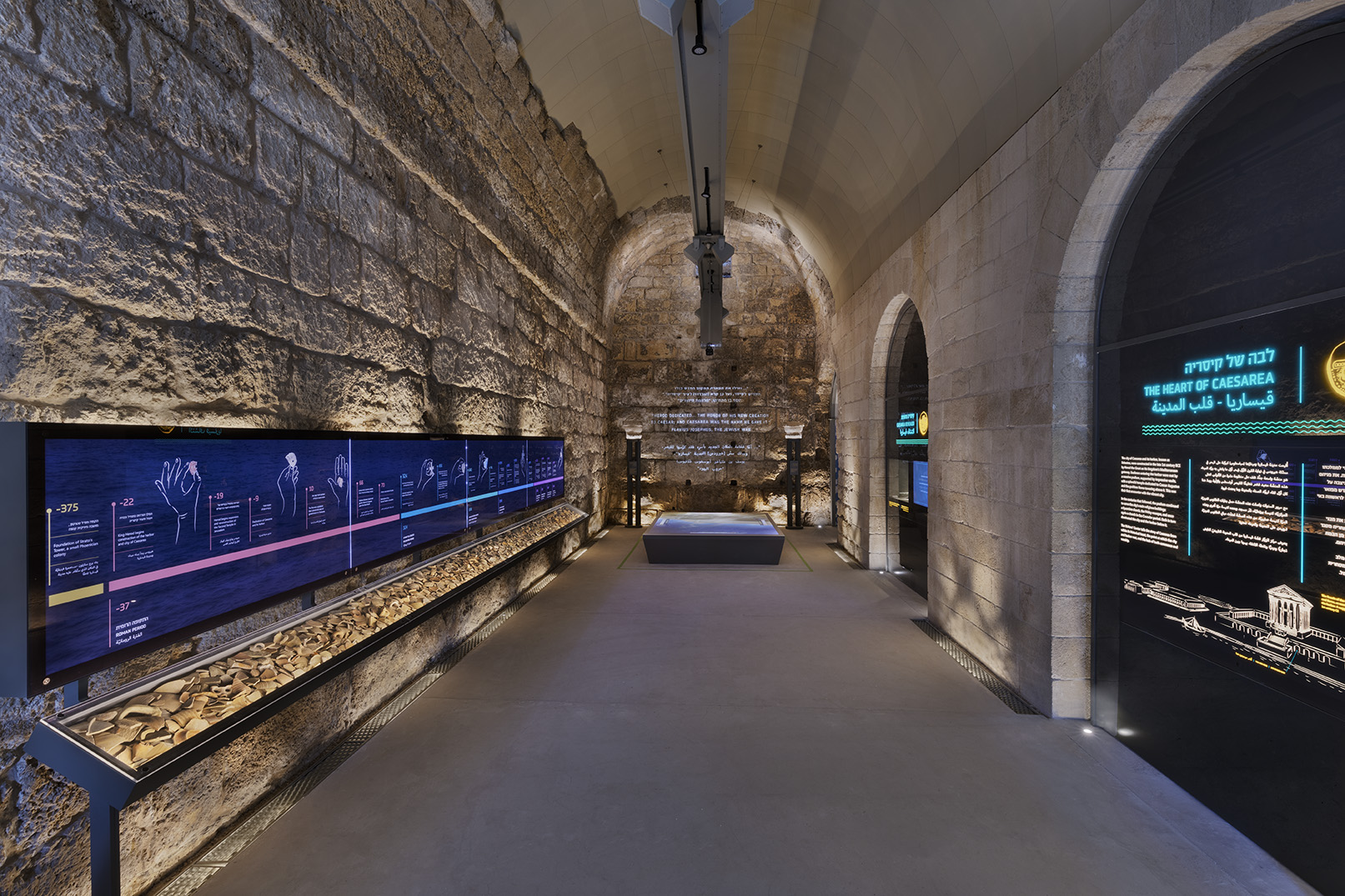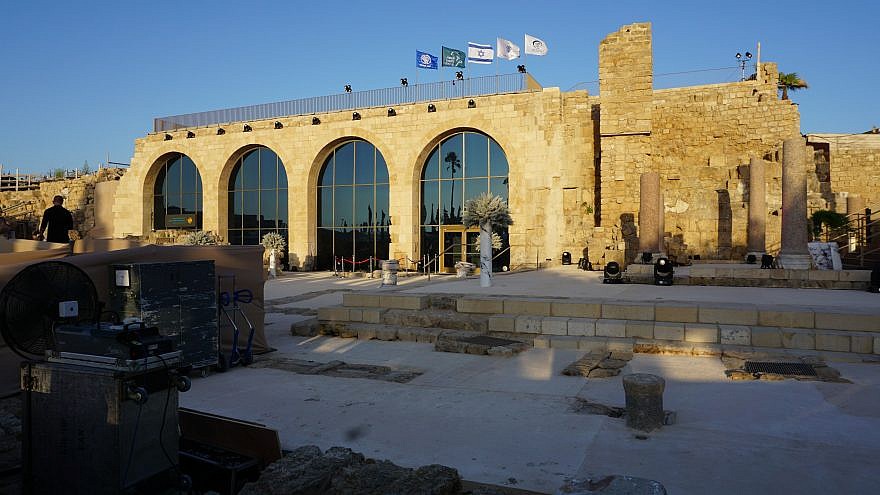Jerusalem and Caesarea are 85 miles apart—one inland and one on the coast—but both cities bear the unmistakable imprint of Herod, the master builder of ancient times. In Jerusalem, Herod refurbished the Second Temple, and in Caesarea he conceived and planned a massive port city replete with a harbor, palace, temple, amphitheater and hippodrome.
Today, both cities receive masses of visitors from all over the world. Caesarea, however, has recently undergone a extensive preservation and restoration project in an effort to boost the number of tourists to rival the millions who visit Jerusalem every year.
The vaults, which look out over the harbor, are adjacent to a monumental staircase still being restored that led those arriving from the harbor to the temple itself.

The Visitor Center combines artifacts representing the many cultures in Caesarea’s long history with innovative displays and a 10-minute film telling the story of Herod and the building of Caesarea projected vertically onto one of the huge vault walls.
Karsenti explains that the renewal project took more than five years of intensive, collaborative work by archaeologists, engineers and preservation architects, and the cooperation of the Israel Antiquities Authority, the Israel Nature and Parks Authority and the Edmond de Rothschild Foundation, which provided 150 million NIS ($41.2 million) in funding.
Baroness Ariane de Rothschild represented the foundation at the opening, noting that “Caesarea is an inspiration for our call to co-create the future.” Alluding to the Muslims, Christians and Jews who had been sovereign in Caesarea during different periods in her history, she added: “We go beyond just acknowledging human diversity. We engage in building a society that is strengthened by all its members, beliefs and traditions.”
Before cutting the ribbon together with the baroness, Rivlin told guests that “history is not about dry facts or statistics. It is about the lives people lived, the places they loved and their stories. The Caesarea Vaults restoration project ensures that the story of this place and of its connection to the Jewish people will be told for many, many years to come. And I believe that one day soon, Caesarea will take its rightful place as one of the world’s most impressive windows to the ancient past.”
Recent discoveries abound
As part of the restoration project, Israel Antiquities Authority archaeologists uncovered three significant finds from different eras near the vaults: a mosaic floor from the Roman period (second or early third century CE) discovered in a bathhouse next to the temple podium—a replica is on display in the entrance area to the Visitor Center.

A cache of some 500 bronze coins from the Byzantine period (sixth to fourth centuries CE) was also unearthed when one of the vaults was exposed. Israel Antiquities Authority experts found them under the floor of a magnificent Byzantine church that was built on top of the temple podium and its vaults. During the excavation, archaeologists confirmed that Herod’s original vaults had collapsed and were reconstructed in the Byzantine period.
The third recent discovery was a mosaic from the fifth century CE. bearing a Greek inscription: “He who knows all is Hosea and he is blessed.” The inscription was deciphered by Leah Di Segni of the Hebrew University in Jerusalem.
The National Park site between Haifa and Tel Aviv spans more than 120 acres, and most visitors spend a couple of hours traversing the different areas via several routes to take in the various sites. Park officials estimate that it would take almost six hours to see all the major sites at the park, which includes the oldest theater found in Israel; the remnants of Roman and Byzantine streets; a fortified medieval city; the amphitheater; aqueduct; harbor, bathhouse complex; and the Roman wall.
At present, public transportation is very limited, so most people arrive in groups on tour buses for abbreviated visits on their way somewhere else. Shaul Goldstein, head of the Israel National Parks Authority, promises that plans are afoot for improved public transportation to serve Caesarea, as well as the many other national parks that are in out of the way locations.
The hundreds of cruise ships that dock in nearby Haifa are a prime source of tourists that Caesarea hopes to attract with its updated facilities, says Goldstein.
The new Visitor Center opened to the public on June 1. Click here for details.


























